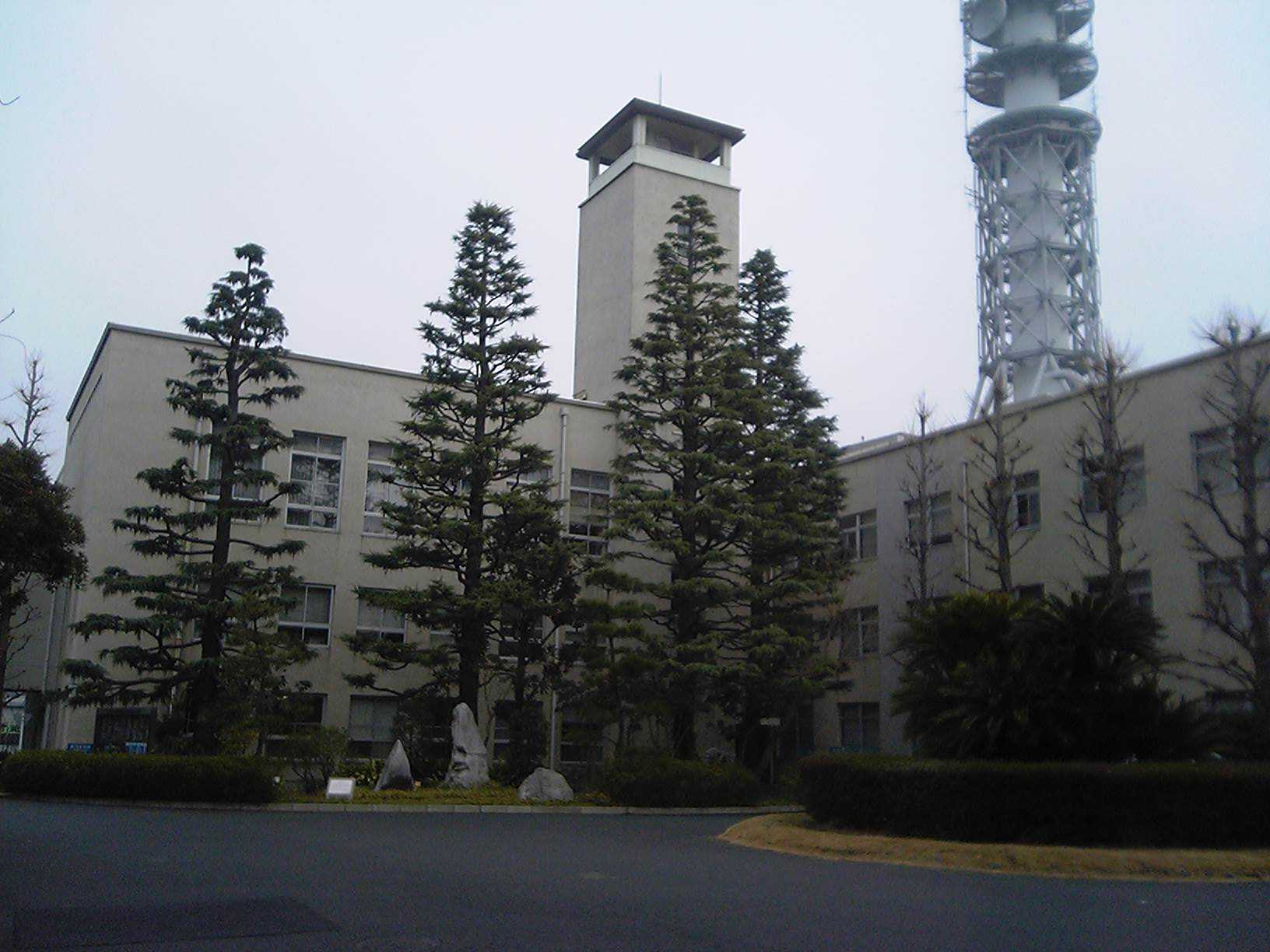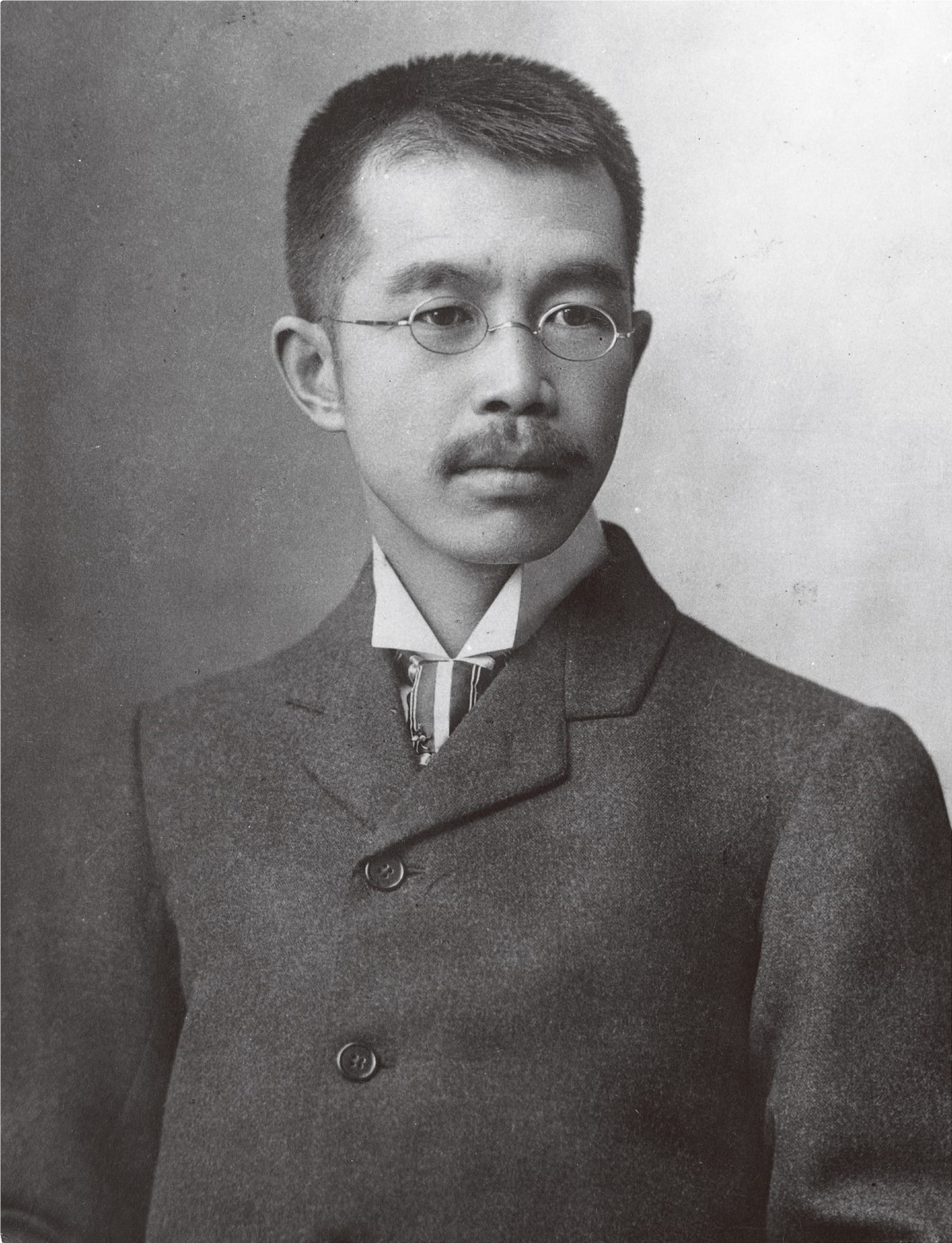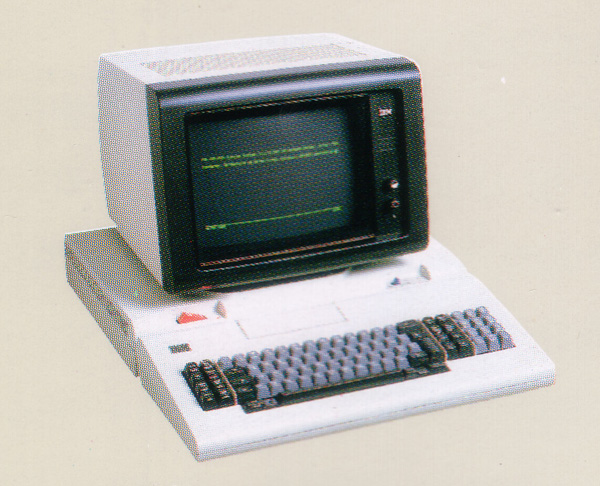|
IBM Fujisawa
IBM Fujisawa—located in Fujisawa, Kanagawa, Japan—was a manufacturing and development site of IBM Japan Ltd., IBM Japan, Ltd., a subsidiary of IBM Corporation. Fujisawa manufacturing IBM Fujisawa was established in 1967. As a manufacturing plant, it produced the following products: *Tabulating machine *IBM 1440 computer *IBM System/360 IBM System/360 Model 40, Model 40 computer *IBM 270x, 2701 and other communications controllers In 1971, manufacturing of System/360, System/370 and IBM 4300 mainframes moved to the newly opened IBM Yasu in Yasu, Shiga,。 *IBM Personal System/55 *IBM ThinkPad *Harddisk In December, 2002, as Hitachi, Hitachi Ltd. bought IBM's hard disk division, IBM Fujisawa became the headquarters and the main plant of HGST, Hitachi Global Storage Technology. Fujisawa development In 1972, the Fujisawa development lab was established in a new building inside the Fujisawa site. It developed the following hardware and software products: ;For worldwide *IBM 3767 - ... [...More Info...] [...Related Items...] OR: [Wikipedia] [Google] [Baidu] |
Fujisawa, Kanagawa
is a Cities of Japan, city in Kanagawa Prefecture, Japan. , the city had an estimated population of 439,728 and a population density of 6300 persons per km2. The total area of the city is . Geography Fujisawa is in the south-central part of Kanagawa Prefecture. It faces Sagami Bay of the Pacific Ocean. The northern part of the city is on the Sagamino plateau while the southern part is abutted on the Shonan Beach. Fujisawa has three major topographical features: the island of Enoshima to the south connected to the Katase shoreline area by a road bridge, and two rivers, the Hikiji River, Hikiji and the Sakai River (Tokyo, Kanagawa), Sakai, which run north-south. The Hikiji River, Hikiji can be traced from an area designated as a nature reserve park in the city of Yamato and flows directly along the boundary of the joint US Navy and Japan Maritime Self-Defense Force Naval Air Facility Atsugi, Atsugi Naval Air Base and the United States Army Camp Zama. The Sakai runs directly from ... [...More Info...] [...Related Items...] OR: [Wikipedia] [Google] [Baidu] |
Hitachi
() is a Japanese Multinational corporation, multinational Conglomerate (company), conglomerate founded in 1910 and headquartered in Chiyoda, Tokyo. The company is active in various industries, including digital systems, power and renewable energy, railway systems, Health care, healthcare products, and Financial system, financial systems. The company was founded as an electrical machinery manufacturing subsidiary of the Kuhara Mining Plant in Hitachi, Ibaraki by engineer Namihei Odaira in 1910. It began operating as an independent company under its current name in 1920. Hitachi is listed on the Tokyo Stock Exchange and is a key component of the Nikkei 225 and TOPIX Core30 indices. As of June 2024, it has a market capitalisation of 16.9 trillion yen, making it the fourth largest Japanese company by market value. In terms of global recognition, Hitachi was ranked 38th in the 2012 Fortune Global 500 and 129th in the 2012 Forbes Global 2000. Hitachi is a highly globalised conglomerat ... [...More Info...] [...Related Items...] OR: [Wikipedia] [Google] [Baidu] |
IBM 5550
IBM 5550 is a personal computer series that IBM marketed in Japan, Korea, Taiwan and China in the 1980s and 1990s, for business use customers. In Japan, it was introduced in 1983 and promoted as "" because it had three roles in one machine: a Personal computer, PC, a word processing machine which was traditionally marketed as a machine different from a PC in Japan, and an IBM-host attached terminal. General The IBM PC that had been marketed by IBM since 1981, using Intel 8088, was not powerful enough to process the far eastern languages of Japanese, Korean and Chinese. Nor was the resolution of IBM PC's display high enough to show the complex characters of these languages. The IBM 5550 was first introduced in Japan in March 1983, using Intel 8086 microprocessor and was called "Multistation 5550" because it had three roles in one machine: a Personal Computer, PC, a word processing machine which was traditionally marketed in Japan as a machine different from a PC, and an online ter ... [...More Info...] [...Related Items...] OR: [Wikipedia] [Google] [Baidu] |
Taiwan
Taiwan, officially the Republic of China (ROC), is a country in East Asia. The main geography of Taiwan, island of Taiwan, also known as ''Formosa'', lies between the East China Sea, East and South China Seas in the northwestern Pacific Ocean, with the China, People's Republic of China (PRC) to the northwest, Japan to the northeast, and the Philippines to the south. It has an area of , with mountain ranges dominating the eastern two-thirds and plains in the western third, where its Urbanization by country, highly urbanized population is concentrated. The combined Free area of the Republic of China, territories under ROC control consist of list of islands of Taiwan, 168 islands in total covering . The Taipei–Keelung metropolitan area, largest metropolitan area is formed by Taipei (the capital), New Taipei City, and Keelung. With around 23.9 million inhabitants, Taiwan is among the List of countries and dependencies by population density, most densely populated countries. Tai ... [...More Info...] [...Related Items...] OR: [Wikipedia] [Google] [Baidu] |
Korea
Korea is a peninsular region in East Asia consisting of the Korean Peninsula, Jeju Island, and smaller islands. Since the end of World War II in 1945, it has been politically Division of Korea, divided at or near the 38th parallel north, 38th parallel between North Korea (Democratic People's Republic of Korea; DPRK) and South Korea (Republic of Korea; ROK). Both countries proclaimed independence in 1948, and the two countries fought the Korean War from 1950 to 1953. The region is bordered by China to the north and Russia to the northeast, across the Yalu River, Amnok (Yalu) and Tumen River, Duman (Tumen) rivers, and is separated from Japan to the southeast by the Korea Strait. Known human habitation of the Korean peninsula dates to 40,000 BC. The kingdom of Gojoseon, which according to tradition was founded in 2333 BC, fell to the Han dynasty in 108 BC. It was followed by the Three Kingdoms of Korea, Three Kingdoms period, in which Korea was divided into Goguryeo, Baekje, a ... [...More Info...] [...Related Items...] OR: [Wikipedia] [Google] [Baidu] |
DBCS
A double-byte character set (DBCS) is a character encoding in which either all characters (including control characters) are encoded in two bytes, or merely every graphic character not representable by an accompanying single-byte character set ( SBCS) is encoded in two bytes (Han characters would generally comprise most of these two-byte characters). A DBCS supports national languages that contain many unique characters or symbols (the maximum number of characters that can be represented with one byte is 256 characters, while two bytes can represent up to 65,536 characters). Examples of such languages include Japanese and Chinese. Hangul does not contain as many characters, but KS X 1001 supports both Hangul and Hanja, and uses two bytes per character. In CJK computing The term ''DBCS'' traditionally refers to a character encoding where each graphic character is encoded in two bytes. In an 8-bit code, such as Big-5 or Shift JIS, a character from the DBCS is represented with a le ... [...More Info...] [...Related Items...] OR: [Wikipedia] [Google] [Baidu] |
IBM Kanji System
The IBM Kanji System was announced in 1971 to support Japanese language processing on the IBM System/360 computers. It was later enhanced by the support of IBM System/34, IBM 5550 and DOS/V. General The IBM Kanji System became available in a series of staged announcements. Its initial technical demonstration was done at Expo '70 in Osaka, and an official announcement was made in 1971, including:Kurt Hensch, Toshiaki Igi, Masumi Iwao, Akira Oda and Toru Takeshita. "IBM History of Far Eastern Languages in Computing, in 3 Parts" in IEEE Annals of the History of Computing, Volume 27 Number 1 ( January - March, 2005 ) * IBM 2245 Kanji Printer * IBM 5924 Kanji Keypunch * IBM System/360-System/370 OS/VS1 & DOS/VSE Programming support The Kanji Keypunch was able to punch up to 2950 kinds of Kanji characters, using the left hand to select one of the 15 shift keys and the right hand to select one of the 240 Kanji characters for each shift. Until that time, only English alphanumeric and Jap ... [...More Info...] [...Related Items...] OR: [Wikipedia] [Google] [Baidu] |
Hard Disk Drive
A hard disk drive (HDD), hard disk, hard drive, or fixed disk is an electro-mechanical data storage device that stores and retrieves digital data using magnetic storage with one or more rigid rapidly rotating hard disk drive platter, platters coated with magnetic material. The platters are paired with disk read-and-write head, magnetic heads, usually arranged on a moving actuator arm, which read and write data to the platter surfaces. Data is accessed in a random-access manner, meaning that individual Block (data storage), blocks of data can be stored and retrieved in any order. HDDs are a type of non-volatile storage, retaining stored data when powered off. Modern HDDs are typically in the form of a small disk enclosure, rectangular box. Hard disk drives were introduced by IBM in 1956, and were the dominant secondary storage device for History of general-purpose CPUs, general-purpose computers beginning in the early 1960s. HDDs maintained this position into the modern er ... [...More Info...] [...Related Items...] OR: [Wikipedia] [Google] [Baidu] |
Microdrive
The Microdrive was a miniature, 1-inch hard disk drive released in 1998 by IBM. The idea was originally created in 1992 by duTimothy J. RileyanThomas R. Albrechtat the Almaden Research Center in San Jose. A team of engineers and designers at IBM's Fujisawa, Japan facility helped make the creation of the drive possible. Due to the failure of the Kittyhawk, a 1.3-inch hard disk drive also created in 1992 by Hewlett Packard, initial support for it was reluctant. Despite that, development persisted. The Microdrive caused the creation of and used the CompactFlash Type II format which became the ''de facto'' standard for devices utilizing the technology at the time. Because of this, and its advantages over flash technology, the Microdrive ended up being a success. Although a niche for a short time, the Microdrive market later became very competitive. Many companies began producing miniature hard disk drives also referred to as Microdrives. Some offered more storage capacity or w ... [...More Info...] [...Related Items...] OR: [Wikipedia] [Google] [Baidu] |
ASCII
ASCII ( ), an acronym for American Standard Code for Information Interchange, is a character encoding standard for representing a particular set of 95 (English language focused) printable character, printable and 33 control character, control characters a total of 128 code points. The set of available punctuation had significant impact on the syntax of computer languages and text markup. ASCII hugely influenced the design of character sets used by modern computers; for example, the first 128 code points of Unicode are the same as ASCII. ASCII encodes each code-point as a value from 0 to 127 storable as a seven-bit integer. Ninety-five code-points are printable, including digits ''0'' to ''9'', lowercase letters ''a'' to ''z'', uppercase letters ''A'' to ''Z'', and commonly used punctuation symbols. For example, the letter is represented as 105 (decimal). Also, ASCII specifies 33 non-printing control codes which originated with ; most of which are now obsolete. The control cha ... [...More Info...] [...Related Items...] OR: [Wikipedia] [Google] [Baidu] |
IBM 3101
The IBM 3101 ASCII Display Station, and IBM's subsequent products, the 3151/315X and 3161/316X, are display terminals with asynchronous serial communication (start-stop signaling) that were used with a variety of IBM and non-IBM computers during the 1980s–90s, especially the data processing terminals on non-IBM minicomputers, IBM Series/1 and IBM AIX computers. Models IBM 3101 The IBM 3101 ASCII Display Station appeared in 1979. It featured: * 12-inch green-phosphor Cathode ray tube, CRT display * 24 lines of 80 characters * Keyboard layout, ASCII Keyboard (US English, Belgian, Danish, Finnish, French, German, Italian, Japanese Katakana, Norwegian, Portuguese, Spanish, Swedish, Swiss French, Swiss German, UK English) * Asynchronous communication: EIA RS-232C interface for short distance; EIA RS-422 interface for longer distance * Baud, Baud rates of 200/300 to 19,200 (bps) Unusually for IBM's practices at the time, it also: * Utilized various non-IBM technologies * Required ... [...More Info...] [...Related Items...] OR: [Wikipedia] [Google] [Baidu] |
IBM 3270
The IBM 3270 is a family of Block-oriented terminal, block oriented display and printer computer terminals introduced by IBM in 1971 and normally used to communicate with IBM mainframes. The 3270 was the successor to the IBM 2260 display terminal. Due to the text color on the original models, these terminals are informally known as ''Monochrome monitor, green screen'' terminals. Unlike a character-oriented terminal, the 3270 minimizes the number of input/output, I/O interrupts required by transferring large blocks of data known as data streams, and uses a high speed proprietary communications interface, using coaxial cable. IBM no longer manufactures 3270 terminals, but the IBM 3270 protocol is still commonly used via TN3270 clients, 3270 emulator, 3270 terminal emulation or web interfaces to access mainframe-based applications, which are sometimes referred to as ''green screen applications''. Principles The 3270 series was designed to connect with mainframe computers, often ... [...More Info...] [...Related Items...] OR: [Wikipedia] [Google] [Baidu] |






